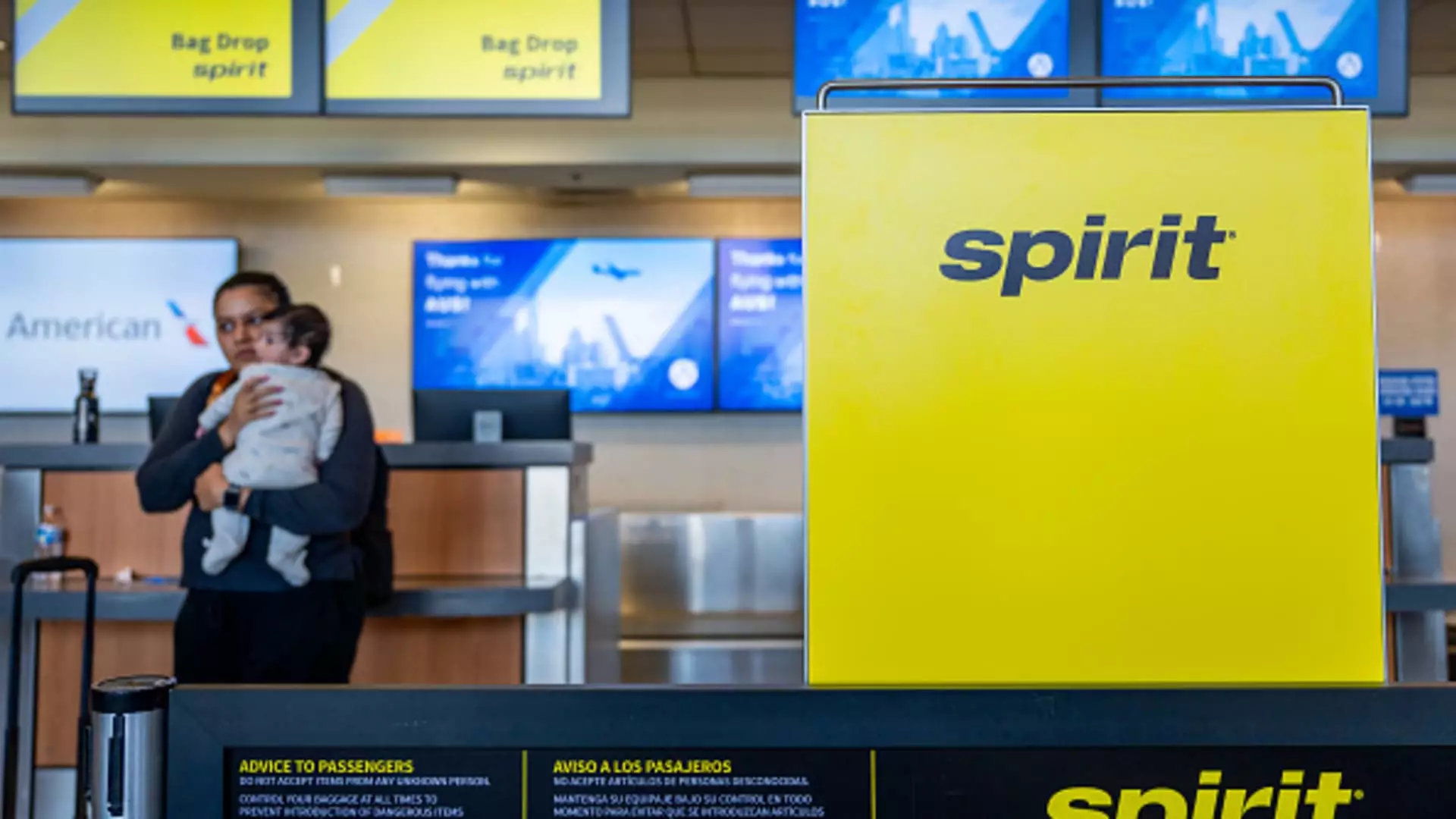In a significant move within the airline industry, Spirit Airlines has recently filed for Chapter 11 bankruptcy protection. This marks a pivotal moment, as it is the first major U.S. passenger airline to take such a step since American Airlines did so over a decade ago. Surprisingly, Spirit is not planning to shutter its operations; rather, the airline aims to use this legal provision to restructure its financial obligations and stabilize its operations despite the challenging circumstances. CEO Ted Christie reached out to customers, providing reassurance that flight bookings and the use of loyalty points would proceed as usual during this turbulent period.
Spirit Airlines’ journey into bankruptcy is rooted in a series of financial setbacks initiated before the COVID-19 pandemic but exacerbated by it. Since 2019, the carrier has struggled with profitability, but the pandemic unveiled a cascade of exacerbating factors. The aviation sector, already facing heightened operational costs, grappled with reduced demand and grounded fleets—Spirit’s Airbus jets were notably affected due to an engine recall. Compounding this distress was a federal ruling that blocked Spirit’s acquisition attempt by JetBlue Airways, underscoring a turbulent market environment.
With debts totaling $1.1 billion due in the coming year and an impending deadline related to credit card processing agreements, Spirit found itself in an untenable position. On Monday, the airline announced it successfully orchestrated a prearranged bankruptcy plan with the majority of its bondholders, paving the way for a streamlined restructuring process. This pathway aims for the carrier’s emergence from bankruptcy by the first quarter of 2025, allowing it to stabilize its financial footing.
Filing for Chapter 11 does not equate to a halt in operations; instead, it offers protection as Spirit works to reorganize its business model. Travelers will need to stay informed regarding potential schedule changes that may arise, as watchdogs in the travel industry, like Henry Harteveldt of Atmosphere Research Group, highlight concerns around possible aircraft retirements or layoffs. Despite these uncertainties, Spirit is likely to maintain its flight schedule as much as possible during the lucrative holiday season, a critical time for revenue generation in the airline sector.
However, past incidents indicate recommended caution for travelers. Under U.S. regulations, passengers are entitled to cash refunds if their flights are canceled without rebooking alternatives. Still, the Department of Transportation (DOT) warns that the ongoing bankruptcy might complicate the refund process for affected customers. In such situations, passengers could see their refund requests stalled as the airline conserves assets—an unsettling prospect for those relying on timely travel plans.
For consumers booking flights with Spirit, understanding the nuances of their payment methods is essential. Harteveldt suggests using a credit card for airline purchases, as it provides a safeguard with more robust cancellation protections compared to debit cards or cash transactions. For those hesitant about the safety of their bookings, purchasing refundable tickets from alternative carriers may serve as a practical solution, though it often comes at a higher cost.
Additionally, travelers should consider travel insurance as a safety net; depending on policy specifics, it can cover pre-paid expenses that might be affected by airline changes due to bankruptcy. These proactive measures could prove invaluable as Spirit navigates its tumultuous restructuring.
With the expectation of emerging from bankruptcy in early next year, Spirit Airlines is positioned for transformation. Historically, this process can lead to a more efficient operation and redefined business strategy. Given the current scarcity of available aircraft in the market, rival airlines may seek to acquire some of Spirit’s resources, which could alter the competitive landscape as well.
The carousal of mergers and acquisitions in the airline industry appears steadfast, and the previously planned merger between Spirit and Frontier may reignite, especially with the backdrop of shifting political dynamics potentially favoring deal-making in the aviation sphere.
While bankruptcy represents a formidable challenge for Spirit Airlines, it also opens doors for much-needed restructuring. Travelers, however, must tread carefully during this uncertain period, maintaining awareness of their booking rights and the evolving situation. With informed decision-making and adaptable strategies, passengers can navigate this turbulent time, ensuring their travel plans can withstand the potential ripple effects of Spirit’s financial maneuvers.

